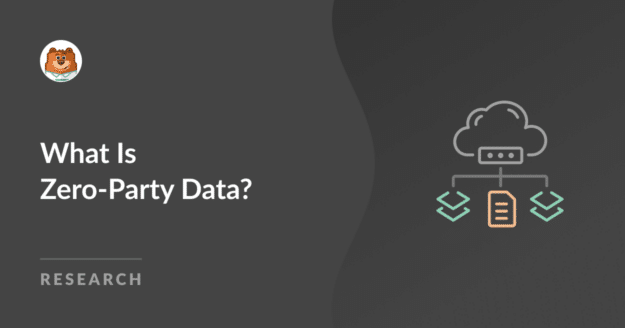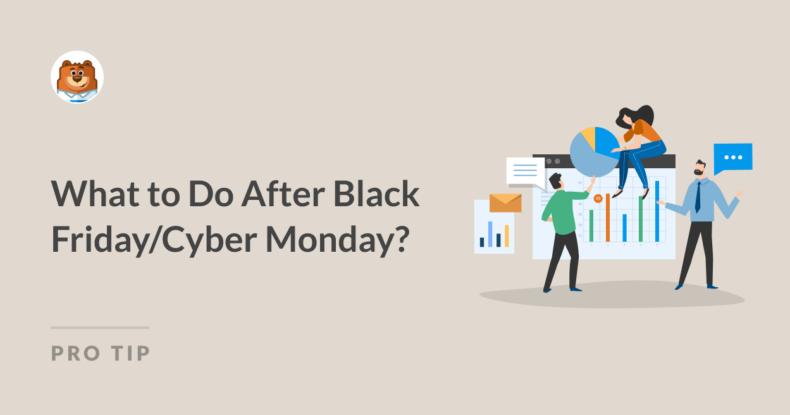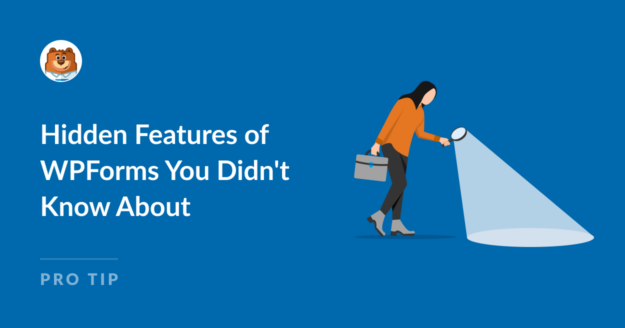AI Summary
Zero-party data is incredibly valuable because it reflects the customer’s genuine interests and needs.
For example, when customers fill out a survey or a preference form, they are providing zero-party data.
This guide will explore the benefits, collection methods, and effective use of zero-party data to help you maximize its potential.
In This Article
What Is Zero-Party Data?
Zero-party data refers to information a customer willingly and knowingly provides to a company. This can include details like their preferences, opinions, and intentions.
By knowing how zero-party data differs from other types, businesses can better appreciate its value and use it to create more meaningful customer interactions.
Different Types of Customer Data
To understand zero-party data better, it’s useful to know how it differs from the other main types of customer data.
First-party data
First-party data is information that a company collects directly from its customers. This data includes website activity, purchase history, and user interactions with the company’s services.
It is collected through owned channels like websites, apps, and customer feedback. This data is reliable and provides insights into customer behavior.
Second-party data
Second-party data is first-party data that a company shares with a trusted partner. This partner then uses this data to enhance their own customer understanding.
For example, a travel company might share booking data with a hotel chain to offer better deals to travelers. This data is valuable because it comes from a known and reliable source.
Third-party data
Third-party data is collected by entities without a direct relationship with the customer. This data is gathered from various sources and sold to companies for marketing.
While it can help with targeting and segmentation, it may not be as accurate or trustworthy as first or second-party data. Examples include demographic information and behavioral data from cookies and other tracking technologies.
Zero-party data
Zero-party data is information that customers willingly and directly share with a company like when building a progressive profile. This includes preferences, feedback, and personal details from surveys, forms, or preference centers.
Unlike other data types, zero-party data is entirely based on what customers choose to share, making it highly accurate and valuable for personalizing customer experiences. It builds trust and transparency between the customer and the company.
| Customer Data Type | Zero-Party Data | First-Party Data | Second-Party Data | Third-Party Data |
|---|---|---|---|---|
| Relationship with Customer | Direct and voluntary | Direct and inferred | Indirect, through a trusted partner | Indirect, from multiple sources |
| Consent | Explicitly given by the customer | Implied through interactions | Assumed consent through the original collector’s terms | Assumed consent through various third-party sources |
| Data Type | Individual preferences, feedback, and personal context | Behavioral, transactional, and interaction data | Aggregated data from a partner’s first-party data | Aggregated data from various external sources |
| Accuracy | Highly accurate | Generally accurate | Depends on the partner’s data accuracy | Variable. may include inaccuracies |
| Shared | Not shared | Not shared | Shared between the collecting company and its partner | Sold to multiple companies |
| Examples | Survey responses, preference center inputs, quiz results | Website analytics, purchase history, CRM data | Loyalty program data shared between airlines and hotel chains | Demographic data, browsing behavior data sold by data brokers |
How Can Businesses Benefit from Zero-Party Data
Zero-party data offers several key benefits that can significantly improve how businesses interact with their customers:
It’s More Accurate
Zero-party data is highly accurate because it comes directly from the customer. Since customers provide this information willingly, businesses can trust its authenticity.
For example, a fashion retailer might ask customers about their style preferences through a survey. The responses give precise insights into what the customers like, allowing the retailer to recommend products that match their tastes.
It’s Tailored to Customers
With zero-party data, businesses can create personalized experiences that cater to individual customer preferences.
For instance, a streaming service might use data from a preference center where users select their favorite genres. This information helps the service suggest movies and shows that align with each user’s interests, enhancing their viewing experience.
It’s More Consent-Focused
Customers are more likely to trust a company that asks for their information directly rather than collecting it through hidden means. Businesses that are transparent about how they use data create a stronger relationship with customers.
For example, a beauty brand can use quizzes to ask customers about their skin type and concerns and then use this data to suggest suitable products. This transparent approach builds trust and encourages more customers to share their preferences.
It’s Compliant with Privacy Regulations
Collecting zero-party data helps businesses comply with privacy laws since the data is collected with explicit consent. Regulations like GDPR and CCPA emphasize the importance of obtaining clear customer consent.
For example, an online store can ask customers how often they want to receive email updates. By doing so, the store respects customer preferences and adheres to legal requirements.
Why is Zero-Party Data Increasing in Popularity?
One primary reason is the growing concern among consumers about privacy. With frequent data breaches and stringent regulations like GDPR and CCPA, customers are more cautious about how their information is used.
Major browsers, including Google Chrome, have phased out third-party cookies, driving the adoption of zero-party data. Since companies can no longer rely on third-party cookies to track user behavior, they are turning to zero-party data.
Finally, zero-party data improves marketing performance by making campaigns more relevant and engaging. Accurate data provided directly by customers leads to higher conversion rates and better customer satisfaction.
How to Collect Zero-Party Data
Collecting zero-party data can be challenging because customers must actively opt-in. However, you can gather enough information with the right strategy to make informed business decisions. For instance:
- Step 1: Identify the necessary information to collect and use zero-party data. This will ensure that you do not accumulate data that goes unused.
- Step 2: Next, decide on the best way to organize and store this information so it can be easily accessed and analyzed.
- Step 3: Finally, create a clear plan for using the collected data to enhance your business strategies and improve customer engagement.
Step 1: What Information to Collect
Collecting zero-party data involves asking customers for information they willingly provide. Here are some key types of data to collect and how to use WPForms for this purpose:
Preferences
Gathering customer preferences can help tailor products, services, and communications. Use WPForms to create custom form fields where customers can select their favorite product types, preferred communication channels, or desired content topics.
Purchase Intentions
Understanding what customers plan to buy next can help in inventory and marketing strategy. WPForms can be used to design surveys asking customers about their future purchase plans or wish lists.
Feedback
Feedback is crucial for improving products and services. With WPForms, you can set up feedback forms to capture customer opinions on recent purchases, website experiences, or customer service interactions.
Personal Contexts
Collecting personal contexts such as occasions (e.g., birthdays and anniversaries) can enhance personalization efforts. WPForms allows you to create fields where customers can input this information, which can be used for targeted marketing campaigns.
End Goal for Information to Collect
Your ultimate objective is to create a comprehensive profile of every current or potential customer. Depending on your goal, you may need to ask more in-depth demographic, psychographic, or behavioral questions.
| Question Type | Demographic | Psychographic | Behavioral |
|---|---|---|---|
| Purpose | To gather basic information about the customer, such as age, gender, location, and occupation. | To understand the customer’s lifestyle, values, interests, and opinions. | Track the customer’s actions and interactions with your brand, such as purchase history and website behavior. |
| Examples |
|
|
|
Step 2: How and Where to Collect Zero-Party Data
Once you know what data to collect, it’s important to understand how and where to collect it effectively:
Surveys and Questionnaires
Surveys are a straightforward way to gather zero-party data. Embed WPForms surveys on your website or send them via email. Tailor the questions to capture the specific data you need, such as preferences, feedback, and purchase intentions.
Preference Centers
A preference center is a section of your website where customers can update their preferences and interests. Use WPForms to create an easy-to-navigate preference center where customers can indicate their favorite products, preferred communication methods, and other personal interests.
Interactive Content
Interactive content like quizzes and polls can engage customers while collecting valuable data. WPForms can be used to design interactive forms that ask fun and engaging questions, making the data collection process enjoyable for customers.
Loyalty Programs
Loyalty programs are another great avenue for collecting zero-party data. With WPForms, you can create sign-up forms that ask customers about their preferences and interests as they join your loyalty program.
Website Pop-ups
Pop-ups can be used effectively to gather zero-party data without being intrusive. WPForms can be integrated with popup tools to create forms that appear strategically, such as when a customer is about to leave the site or after making a purchase.
Step 3: How You’re Going to Use the Data You Collect
Once you’ve collected zero-party data, the next step is to learn how to use it effectively to benefit your business:
Personalized Marketing
Use the data to tailor your marketing campaigns to individual preferences. For example, if a customer prefers eco-friendly products, you can send them targeted emails promoting your sustainable product lines.
Improving Customer Experience
Leverage the collected data to enhance the customer experience. If customers indicate their favorite communication channels, use them for updates and promotions.
Product Recommendations
Utilize zero-party data to provide accurate product recommendations. For instance, if a customer shares their skin concerns through a WPForms survey, you can recommend skincare products that address them.
Enhancing Customer Loyalty
Zero-party data can help create personalized loyalty programs. Offer rewards and exclusive deals based on the preferences and interests customers have shared with you.
Compliance with Privacy Regulations
Using zero-party data ensures that you comply with privacy laws since customers provide the data voluntarily. This transparency can help build trust and maintain a positive relationship with your audience.
FAQs about Zero-Party Data
Zero-party data is a popular topic of interest among our readers. Here are answers to some common queries about it.
What is the difference between first and zero-party data?
First-party data is collected through customer interactions with your website or app, such as browsing behavior and purchase history.
Zero-party data, on the other hand, is information that customers willingly and directly share with you, such as preferences and feedback provided through surveys or forms.
How do I capture zero-party data?
To capture zero-party data, you can use surveys, quizzes, preference centers, and interactive content on your website. Tools like WPForms can help create these forms and collect valuable customer information.
Who coined zero-party data?
The term “zero-party data” was coined by Forrester Research. It refers to data that customers intentionally share with a brand, often to receive a more personalized experience.
What are the disadvantages of zero-party data?
The main disadvantages of zero-party data include the difficulty of collecting it at scale and the need for customers to opt-in willingly. Additionally, there can be challenges in integrating and managing this data effectively within existing systems.
Next, Address Line 1 vs Address Line 2: What They’re Used For
Have you ever wondered what address line 2 is for? Address formatting can be confusing, and it’s easy to overlook the importance of this second line. Check out this guide to learn about Address Line 1 vs. Address Line 2.
Create Your WordPress Form Now
Ready to build your form? Get started today with the easiest WordPress form builder plugin. WPForms Pro includes lots of free templates and offers a 14-day money-back guarantee.
If this article helped you out, please follow us on Facebook and Twitter for more free WordPress tutorials and guides.



